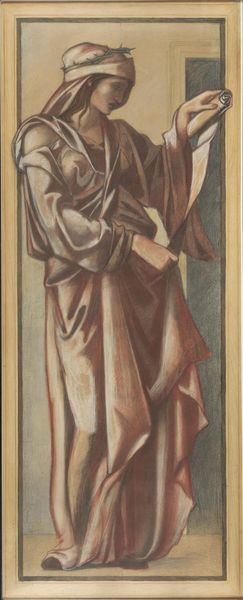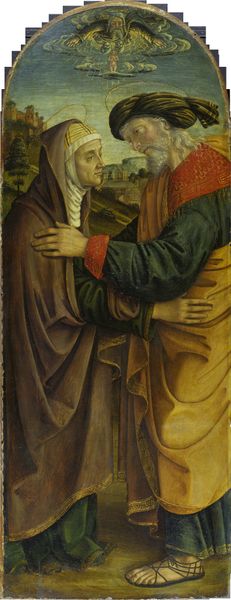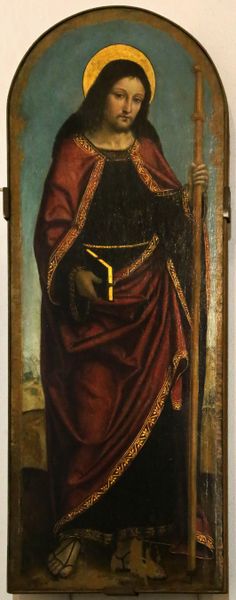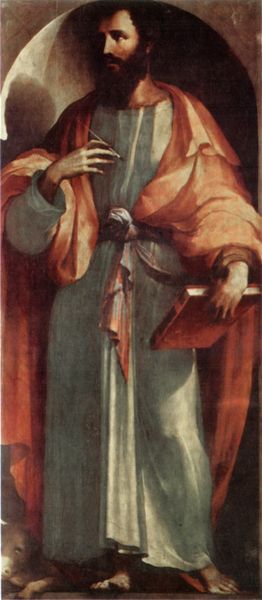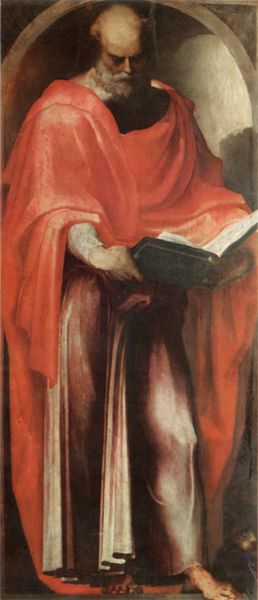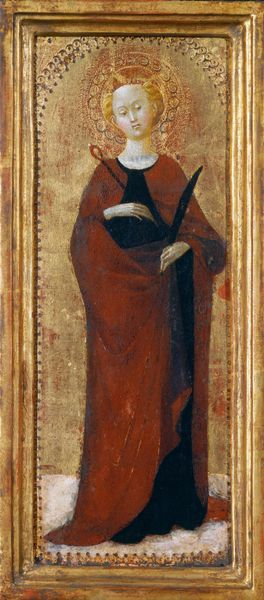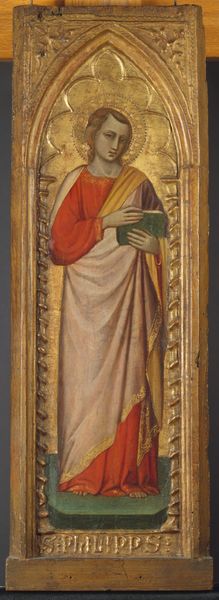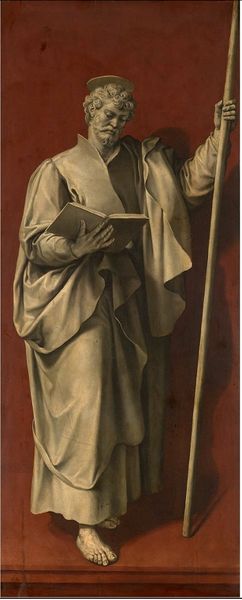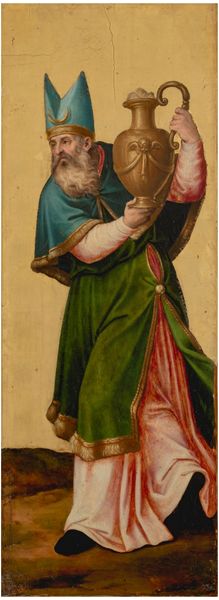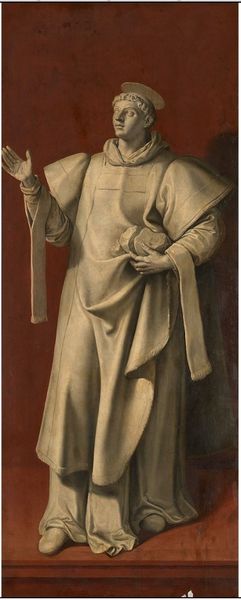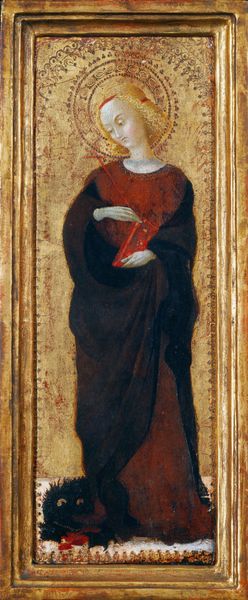
oil-paint
#
portrait
#
oil-paint
#
figuration
#
oil painting
#
history-painting
#
academic-art
#
italian-renaissance
Dimensions: 88 x 40 cm
Copyright: Public domain
Editor: Vicente Juan Masip's "San Pedro," created in 1538 using oil paint, strikes me with its somber tone and the figure’s intense gaze. What stories do you think this painting is trying to tell? Curator: It's fascinating how Masip captures Saint Peter, isn’t it? The keys, of course, are paramount—the "keys to the kingdom," symbolizing Peter’s authority as the first Pope. Consider their visual weight, their prominence. But look closer: what do you notice about Peter’s direct, almost confrontational gaze, the angle, and the book in his left hand? What might those convey, historically speaking? Editor: I guess the book might represent his teachings or writings, like the Epistles? The gaze feels… judging? Curator: Precisely! That book reinforces Peter’s role as a foundational authority in the church, a source of knowledge, while his gaze does suggest judgment but also profound knowledge and unwavering faith. Given the Reformation was already underway, this portrait becomes a powerful statement of Catholic authority, reaffirming traditional doctrine and spiritual power through visual symbolism. Editor: So, it’s more than just a portrait; it’s a visual argument? Curator: Absolutely. Every detail – the keys, the book, the gaze - reinforces a specific message, embedded within a complex cultural and religious narrative. This painting shows not only an image of a saint but it embodies resistance. Editor: That’s amazing! I never would have considered that the painting was used in that manner. Now I'm curious about how other artists approached religious subjects. Curator: Indeed! Thinking about these historical images, we’re forced to consider how visual rhetoric and memory become powerful weapons and tools to navigate tumultuous cultural shifts.
Comments
No comments
Be the first to comment and join the conversation on the ultimate creative platform.
